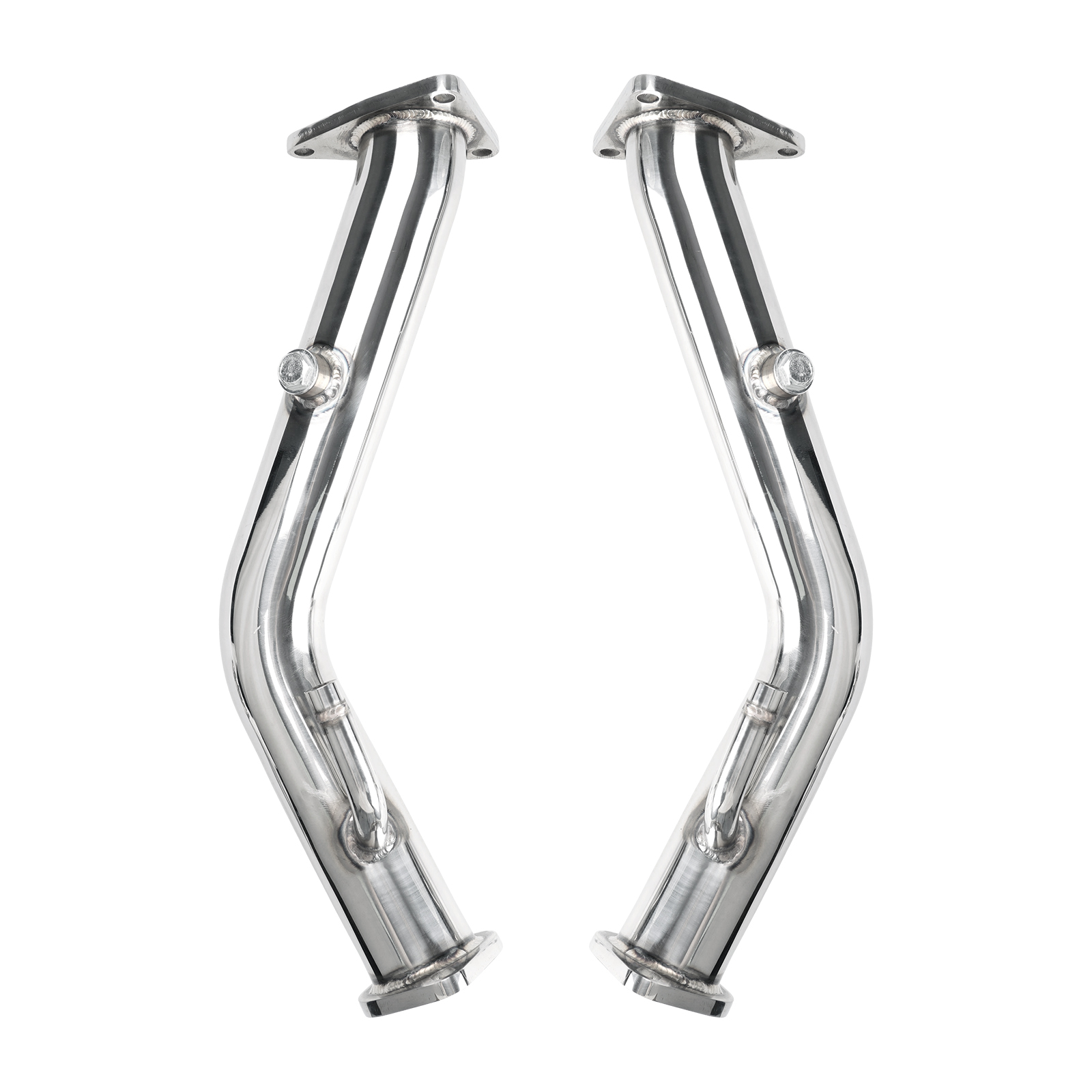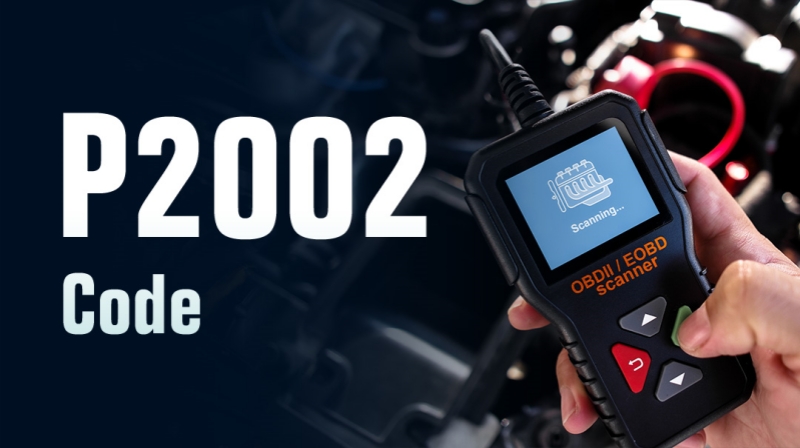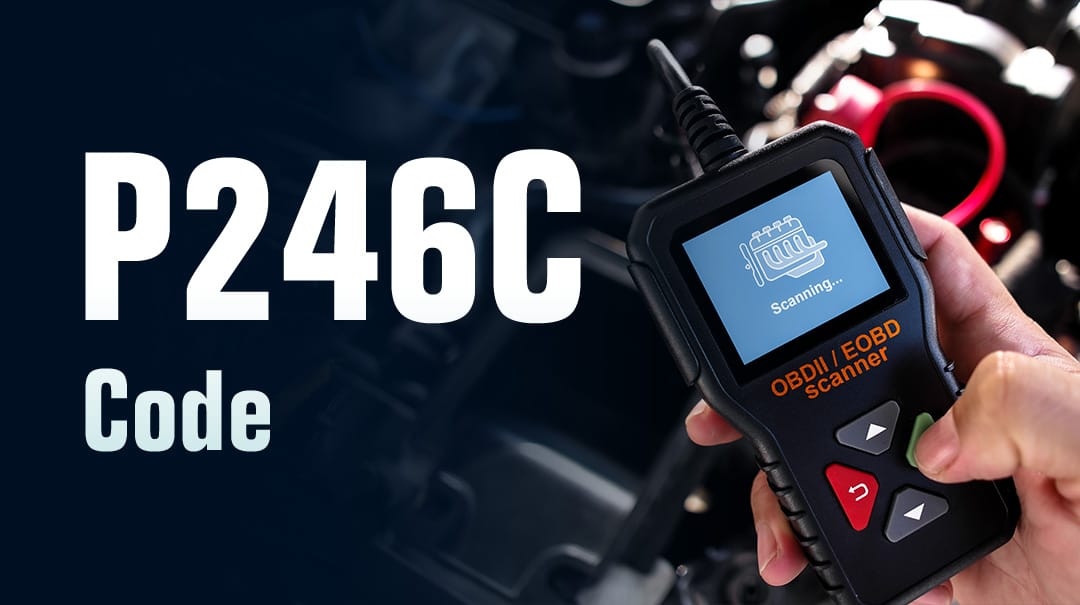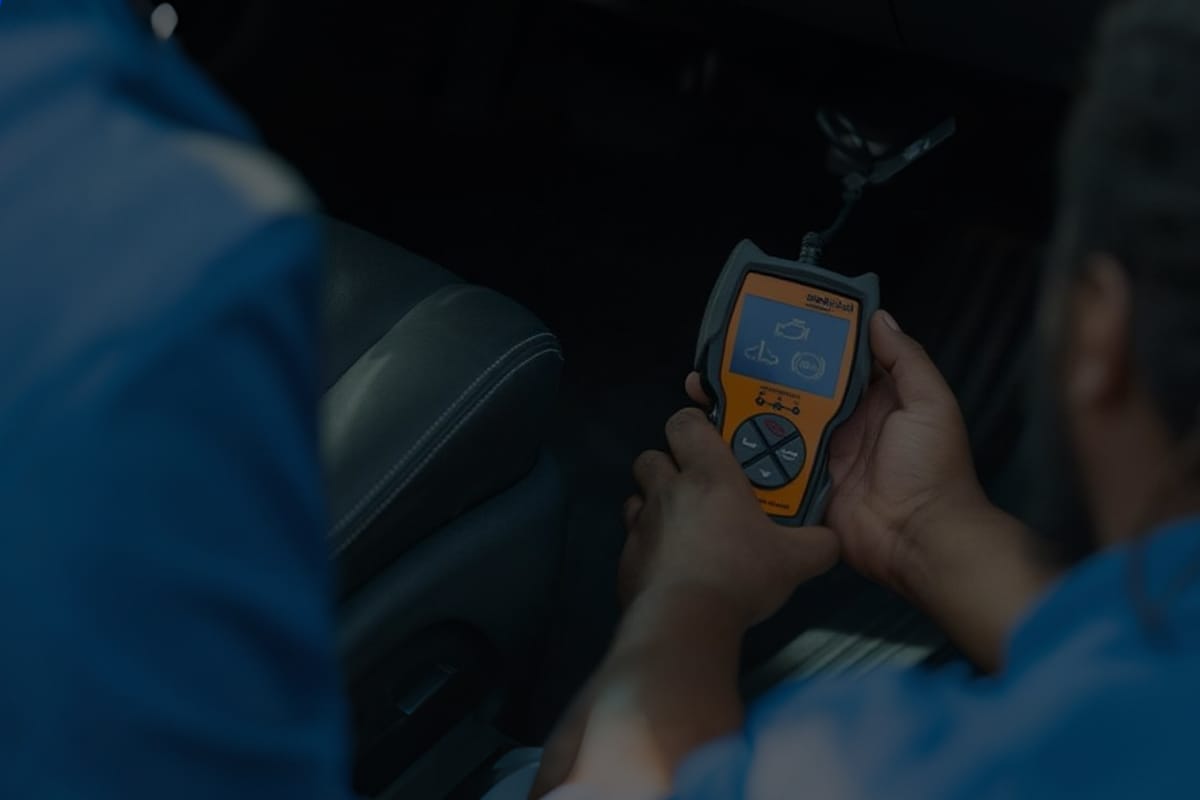"Got a 2017 Ram 2500 Cummins throwing code P2455 - DPF Pressure Sensor 'A' Circuit High. Truck's in limp mode, can I still drive it?" - User "DieselDad77," CumminsForum
If this sounds like your truck, welcome to our team. OBD fault code P2455 basically means that your truck's Engine Control Module (ECM) detected a voltage spike from the diesel particulate filter (DPF) exhaust pressure measurement sensor.
Quick answer? Simply put, the ECM's hearing things - that the sensor is screaming louder than it should. The cause? Usually a shorted sensor, water-damaged connector, or fried wiring. You can still drive short distances, but pushing it too long can clog your DPF. It will force the truck into limp mode and tank performance. Let's get into the topic to understand what trouble code P2455 indicates, what causes it, how to repair it, and stop it from coming back to haunt in the future.
Code P2455 = DPF pressure sensor "A" circuit high.
Main causes: Shorted wiring, sensor fault, or blocked pressure hose.
Fix: Inspect wiring, clean/replace the sensor, and check hoses.
Severity: Moderate to high - prolonged driving may trigger limp mode or DPF failure.
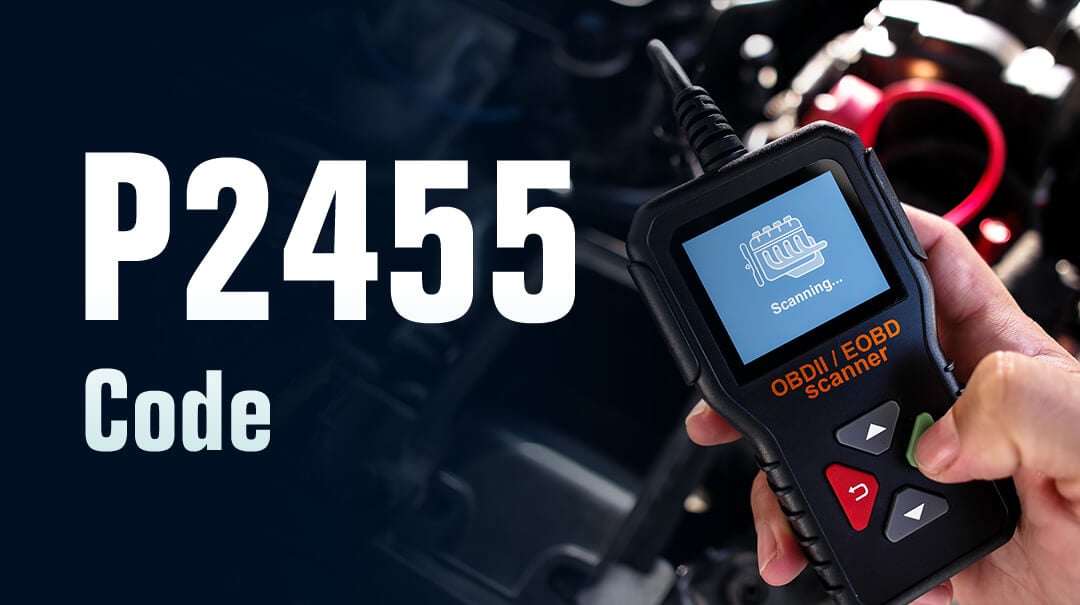
What Does Code P2455 Mean?
OBD-II trouble code P2455 translates to "Diesel Particulate Filter Differential Pressure Sensor 'A' Circuit High."
It basically means that your ECM is detecting higher-than-expected voltage from the DPF pressure sensor. This sensor compares exhaust pressure before and after the filter to measure how clogged it is.
When the sensor signal exceeds the safe range (often above 4.9V), the ECM assumes the circuit is shorted or malfunctioning. It then triggers the DTC P2455 code.
The code can appear after one or several drive cycles, depending on the vehicle. If ignored, this OBD code P2455 can stop proper regeneration. It can increase exhaust backpressure and hurt fuel efficiency. Some vehicles trigger the code after one drive cycle, others take a couple.
Common Symptoms of P2455
When code P2455 hits, keep an eye out as your vehicle will show at least a few of these symptoms:
- Check Engine Light (CEL): The first obvious sign.
- Reduced engine power or limp mode: Your vehicle might suddenly not accelerate past a certain point.
- Poor fuel economy: Excessive soot buildup or incomplete combustion can make your MPG nosedive.
- Hard or rough idling: The Engine feels uneven or shaky at stops.
- Increased exhaust smoke: Darker-than-usual exhaust, sometimes with a strong diesel smell.
- Possible turbo issues: If left unchecked, excessive backpressure can cause turbo strain or failure.
Real owner report: "My 6.7 Cummins went into limp mode with code P2455 - no boost, couldn't get past 40 mph. Ended up being a shorted DPF sensor harness." - CumminsForum user report
Possible Causes of Code P2455
Several issues can trigger this engine code P2455. But most are electrical or sensor-related. Here's what usually does it:
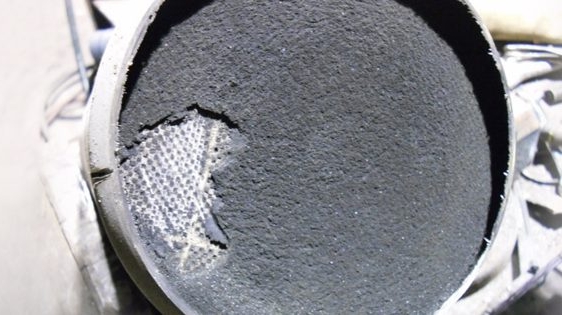
- Short circuit in the sensor wiring or connectors
- Faulty DPF pressure sensor
- Melted or damaged wiring near the exhaust or turbo
- Blocked or kinked pressure hoses
- Moisture or corrosion inside the sensor housing
- DPF system overload from excess soot buildup
- Faulty ECM (rare, but possible)
How to Diagnose Code P2455
Is the DTC P2455 code getting on your nerves? You just need a few smart checks that can save you from wasting money on the wrong fix. Here's how a qualified technician (or a savvy DIYer) usually tackles it:
Tools and Equipment Needed
- OBD-II scanner
- Digital multimeter (with voltage range up to 20V DC)
- Vacuum pump or gauge
- Basic socket and wrench set
- Electrical contact cleaner
- Flashlight and inspection mirror
Step 1: Scan for Trouble Codes
Plug in your OBD-II scanner and confirm P2455. If you see related codes (like P2452, P2453, or P2454), you're probably dealing with wiring or sensor issues, not just one bad part.
Step 2: Inspect the Sensor and Wiring Harness
Locate the DPF pressure sensor, usually near the firewall or on the exhaust manifold. Check for melted insulation, burnt wiring, or corrosion. Diesel heat loves to chew up connectors. Clean the sensor area with electrical cleaner before you go further.
Step 3: Test Voltage and Ground Connections
Using your multimeter, back-probe the sensor's connector:
- Key ON, engine OFF (KOEO)
- Signal voltage should stay below 4.8V at rest. If it reads a constant 5V or higher, you're likely dealing with a short-to-power fault.
- Also, check the ground continuity. Poor grounding can mimic a bad sensor signal.
Step 4: Check the Pressure Hoses
Disconnect the small rubber hoses attached to the sensor. Blow through them gently or use a vacuum pump to test for clogs or soot blockage.
If they're blocked, clean or replace them. Restricted hoses are a top cause of false P2455 triggers.
Step 5: Test the Sensor Response
Reattach the hoses and start the engine. Use a vacuum gauge or OBD scanner to monitor the DPF pressure readings.
If readings don't change with engine RPMs or fluctuate abnormally, your DPF pressure sensor is faulty. Replace it.
Step 6: Check the Wiring Harness (If Needed)
If you still read high voltage even with the sensor unplugged, then that's a classic short-to-power in the harness.
Trace the wiring back to the ECM, paying special attention to areas near the turbo or exhaust. Heat can bake the insulation and cause shorts.
Step 7: Clear Codes and Perform a Test Drive
Once repairs are done, clear the trouble codes using your scanner. Take the vehicle for a 10–15 minute test drive to confirm the Check Engine Light stays off and live data readings return to normal.
Reader's Guide: DIY vs. Mechanic
DIY Level: If you're comfortable using a multimeter and can reach the DPF sensor easily, testing and replacing it is a weekend job.
Professional Mechanic Level: If wiring harness damage or ECM issues are suspected, it's best handled at a shop - diagnosing shorts to power requires precision and time.
Repair Solutions for Code P2455
Now that you are aware of what's causing the code, here's how you can tackle the problem:
- Clogged or cracked hoses are common: Cleaning or replacing them restores proper exhaust pressure readings.
- Repair Wiring or Connectors: Fix melted, frayed, or corroded wires and terminals. Faulty wiring often triggers false "high circuit" signals.
- Replace the DPF Pressure Sensor: If readings stay high, the sensor itself may be bad. Install a new OEM-grade sensor.
- Check for Short to Power: If voltage remains high even after unplugging the sensor, inspect for a short in the harness and repair it.
- Update ECM Software: If no physical faults are present, just refresh the ECM to correct faulty logic.
Pro Tip: You should always disconnect the battery before replacing sensors. Suncent DPF Delete Kits can also help prevent recurring DPF sensor issues if you’ve been dealing with repeated faults.
Vehicles Commonly Affected by Code P2455
P2455 usually shows up in diesel vehicles that use advanced DPF systems. Take a look:
| Make | Model | Common Notes |
|---|---|---|
| Ford | F-250, F-350, F-450 (6.4L Powerstroke) | Often triggered by heat-damaged harnesses near the turbo. |
| Chevrolet/GMC | Silverado 2500HD, Sierra 2500HD (6.6L Duramax) | Usually caused by soot buildup or shorted wiring. |
| Dogde/Ram | 2500, 3500 (6.7L Cummins) | Sensor connectors often corrode due to exhaust heat. |
| Isuzu | NPR, D-Max, NQR | Clogged sensor lines are common; regular maintenance helps. |
| Volkswagen/Audi | Touareg, Q7 (3.0L TDI) | Sensor location near the firewall complicates replacements. |
| Mercedes-Benz | Sprinter Van (3.0L BlueTEC) | Code often appears after incomplete DPF regenerations. |
| Toyota | Hilux, Land Cruiser (Diesel) | Off-road driving tends to kink or damage pressure hoses. |
Note: Any diesel vehicle with a DPF pressure monitoring system can show OBD code P2455, not just these.
Repair Cost Estimate for Code P2455
Fixing P2455 can cost you between $100 and $700. It depends on what's actually wrong. Here's how it usually breaks down:
| Repair Type | Estimated Cost (Parts+Labor) |
|---|---|
| Replace DPF Pressure Sensor | $150-300 |
| Clean / Replace Pressure Hoses | $75-$200 |
| Repair Wiring Harness | $100-$400 |
| Clean Corroded Connectors | $50-$120 |
| ECM Reflash / Update | $100-$120 |
If the DPF itself is severely clogged and needs a professional cleaning or replacement, the bill can cross $1,000. Luckily, that's not common for this code. You can relax!
DIY Angle: Handy with tools? You can replace the sensor and hoses yourself for around $50–$120 in parts and a free Saturday afternoon.
Prevention Tips for Code P2455
A little maintenance goes a long way in preventing this code from returning. Keep these habits in rotation:
- Take your diesel for a weekly 20–30 minute highway drive to allow DPF regeneration.
- Clean the DPF pressure hoses every 10,000–15,000 miles.
- Keep electrical connectors dry and corrosion-free.
- Avoid cheap, off-brand sensors — they often send inaccurate voltage readings.
- Change your oil and fuel filters regularly to minimize soot and buildup.
FAQs about Code P2455
Conclusion
Code P2455 isn't catastrophic - it's just your diesel's way of saying, "Hey, I can't read exhaust pressure properly."
Whether it's a fried wire, blocked hose, or failing sensor, catching engine code P2455 early saves you a four-figure repair bill. It keeps your DPF happy.
If you act quickly, it's a $200 fix. Ignore it, and you're looking at turbo strain and DPF failure. So don't wait! Grab your scanner, check those wires, and get your diesel breathing freely again.
If you need help choosing the right components, SuncentAuto provides guidance on reliable DPF sensors, connectors, and repair kits.





















